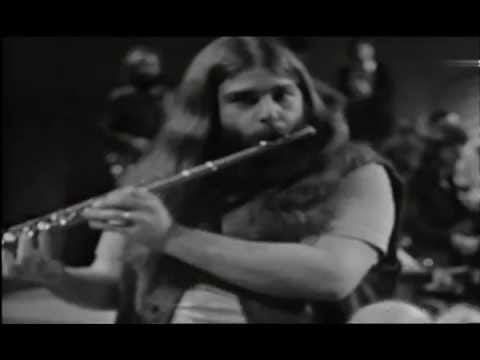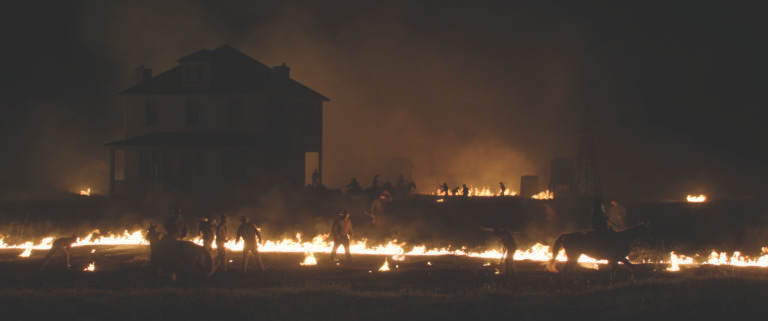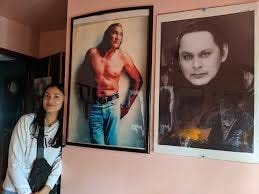Bits and Pieces
Missing tracks from Killers of the Flower Moon; Dave Hickey does Richard Pryor and Dolly Parton; Patti Smith covers Dylan Thomas, Sylvia Plath, and Lou Reed
Greetings, cherished audience. It’s been a busy, surprising few weeks. Portland Public Schools (i.e. free daycare providers) are poised to enter their third straight week of Teachers Union strikes, which appear set to continue through Thanksgiving.
So I thought I’d take this opportunity to catch up on a few recommendations and observations, and give readers a welcome break from the usual seventeen-minute screed. (I’m trying, most-often failing, to reduce these posts to a more easily-digestible ten minute scroll, on average, each week—you can thank time and circumstances for the brevity of this week’s offering.)
Friendly reminder, by clicking “View in browser,” readers won’t have to sit through video commercials, and Youtube clips will begin at the relevant mark:
Killers of the Flower Moon (lost tracks)
Martin Scorsese unveiled a late-career masterpiece last month—it’s long (3.5 hrs), it’s violent, it’s traumatic, it’s hard to watch. It’s epic—a 1920s Western about the systematic murder of the Osage Nation, the richest per-capita demographic on earth at the time thanks to their oil rights in Oklahoma, which put an unwelcome target on their backs—true story, go see it. It’s worth it for the opening sequence alone.
The soundtrack marks the final score composed by Robbie Robertson (The Hawks, Bob Dylan, The Band); the man behind the searing Telecaster sound of Dylan going electric passed away this August. A member of the Six Nations confederation from Canada, Robertson was also a central voice in the documentary Rumble: The Indians Who Rocked the World, about the remarkable, under-credited influence of Native musicians on the American canon, which I’ve recommended elsewhere.
(Rumble is named after Link Wray’s “Rumble”—The Only Instrumental Record Ever Banned By US Radio.)
Robertson became fast friends with Martin Scorsese after the director shot The Band’s farewell concert, for 1978’s The Last Waltz (the ultimate “Thanksgiving film,” as one critic makes a compelling argument - one I’ll share in a few weeks). In the ensuing years, Robertson helped Scorsese curate the soundtracks for Raging Bull (1980) and The Wolf of Wall Street (2013), and composed scores for The Color of Money (1986) and The Irishman (2019).
The cast of Killers of the Flower Moon includes Jack White, and Sturgill Simpson—who scored the opening credits for Scorsese and Mick Jagger’s lamentably short-lived HBO vehicle set in 1970s Eastside New York, Vinyl (2016). The series got as far as the New York Dolls demolishing a building with their amplifiers, before it too crumbled mid-season. (Listen to Sturgill Simpson’s opening ‘groove’ below.)
In short, Killers of the Flower Moon, like Martin Scorsese and Robbie Roberston, is thoroughly-steeped in American (including Canada and Mexico) musical tradition, Indigenous and European. Robertson had this to say about his relationship with Scorsese, and the score, before he died in 2023:
I feel that the score is unexpected in many ways and authentic to the heart of the story. For me, it’s kind of perfection to be able to go all the way around this big circle. Starting at Six Nations when music comes along in my life, and then to my history with Martin Scorsese and all the movies leading up to Killers Of The Flower Moon. The fact that we’re getting to do a Western in our own way, you really couldn’t have written this. We’re in awe ourselves that our brotherhood has outlasted everything. We’ve been there, we’ve been through it. I am so proud of both our friendship and our work. They have been a gift in my life…
I was gathering pictures in my head of music I heard as a child at the Six Nations Indian Reserve. My relatives are all sitting around with their instruments, and one guy would start a rhythm, and then somebody would start singing a melody to that, and it was just haunting. The feeling of the music beside you like that, humming and droning — the groove and the feel of it got under my skin and it lives there forever…
Two days after Marty returned from Oklahoma and filming had wrapped, he was ready to get started with the music. Digging into my imagination and seeing where it leads me helps build what I do with him. Sometimes, it’s a small build, but this was a really big one. A lot of music was involved with this.
—“Stream Robbie Roberston’s Killers Of The Flower Moon Soundtrack,” Stereogum
Yet with all the nods to musical tradition in the film, the official soundtrack lacks two of the most compelling tracks from Killers of the Flower Moon—there are several “period pieces,” vintage numbers not composed by Robbie Robertson, included on the soundtrack. But New Musical Express (“‘Killers Of The Flower Moon’ soundtrack: every song in Martin Scorsese’s epic”), Stereogum, Cowboys and Indians, Spotify—none of these publishers acknowledge two of the most interesting tracks in the film.
You can find them here, at The Third Ear.
“Dark Was the Night, Cold Was the Ground,” Blind Willie Johnson
One of the most unforgettable sequences in the film, shot by cinematographer Rodrigo Prieto (whose techniques included singing to set the rhythm for his recreation of vintage footage while cranking Scorsese’s 1917 Bell and Howell hand-powered camera; read more, here), is the “Fire Scene.”
Prieto used gel-coated lenses against massive lights (not unlike a 60s oil-lamp show) to produce a watery, ethereal effect that is utterly haunting onscreen. The scene was a blip in the script, but it soon became apparent the cinematographer had captured something beyond words.
We were all mesmerized,” Prieto says. “We shot a lot of that, just because it was unexpected and magical . . . Marty never said this. But to me, it is like hell . . Like these characters are really in hell, in a way — or are going there in their minds.
— Movie Maker
And an inseparable part of that scene’s haunting magic, is Blind Willie Johnson’s hypnotic “Dark Was the Night, Cold Was the Ground.”
“Bull Doze Blues,” Henry Thomas
Last week, I somehow found myself in the back of a Sprinter van listening to a techno redux of—of all songs—the Grateful Dead slow-vamp, “Sugaree.” It’s not ideal fodder for an uptempo club remix, but it occurred to me that this is how vernacular musical tradition proceeds—profanely (see Sid Vicious’ rendition of “My Way”). Someday, perhaps, some rave-rat from Gen ? will recognize the melody to “Sugaree” in a film and go searching for it the way I did with “Bull Doze Blues.”
(A few days later, my son detected the strains of Erik Satie’s “Gnossienne No. 1” - ingrained from my constantly hacking that impressionist melody on our garage piano. It was pouring out of the speakers at a sushi restaurant, set to minimal drums and base. And it sounded pretty stellar.)
With the soundtrack in question, for me, the electronic version happened to be Canned Heat’s “Going Up the Country.” The melody of “Going Up the Country,” a pretty little pastoral about escaping upstate for the weekend—or perhaps up to Canada forever to avoid the draft—is immediately recognizable in “Bull Doze Blues,” which by all rights should be on the Killers of the Flower Moon soundtrack. The quills—an Afro-American version of pan pipes, which carry the melody—are also recognizable as period instruments from Scorsese’s Gangs of New York (2002). I nearly included Canned Heat (who recorded a popular cover of Sam the Sham’s “Wooly Bully”) as yet another example of an Anglo-Spanish pop ensemble, this time from Los Angeles, in last week’s column. So here’s Canned Heat…
And here’s the “Bull Doze” original by Henry Thomas circa 1927-29. Pretty joyous.
Other Henry Thomas compositions have been covered by Taj Mahal, The Loving Spoonful, Bob Dylan, and the Greatful Dead. The beat goes on.
On a personal note, Flower Moon is tangential to some Third Ear reporting. Lily Gladstone, who plays the female lead opposite Leonardo DiCaprio’s demented husband, appeared on the first all-Native-produced television series, Reservation Dogs, shot in Oklahoma, where Flower Moon is set. (While I was reporting on a landmark music venue, Cain’s Ballroom in Tulsa, part of the cast from Reservation Dogs dropped by for some R&R.)
While reporting on Leon Russell’s Church Studio in Tulsa (now owned by Teresa Knox), I discovered that the recording studio, previously an African Methodist Episcopal church that survived the 1921 Tulsa Race Massacre (depicted in Flower Moon), was once home to the Indian Council for Drug Abuse and Addiction. The treatment center offered acting classes as well, where Wes Studi (Geronimo, Dances with Wolves, Last of the Mohicans, and Reservation Dogs) and Will Sampson (One Flew Over the Cuckoo’s Nest) may have learned their craft.
One of The Third Ear’s favorite journalists, formerly-local to Portland, Nancy Rommelmann, was married to Will Sampson’s son, Tim—a Native actor in his own right, now deceased. Their daughter Tafv appears in Reservation Dogs alongside Lily Gladstone, who’s sure to win an Oscar this season.
Dave Hickey does Richard Pryor, Dolly Parton
Dave Hickey is one of the finest critics to ever grace the profession, covering everything from Flaubert novels to Siegfried and Roy shows and zone defense. Turning the lowly art of criticism into high literature in the process, he remained thoroughly iconoclastic in the face of academia by arguing, among other controversial positions, in defense of beauty. He once inspired a book, part of which turned into The Third Ear. So you can see why, three days after I wrote about the portrayal of Richard Pryor in Omit the Logic, it was a little daunting to discover that Hickey’s longtime editor had posthumously released a 30th anniversary edition of his influential book, The Invisible Dragon (1993)—including an unpublished essay on Richard Pryor. Thanks to one of The Third Ear’s trusted musicologists, Substack author Ted Gioia, for putting this on my radar, and publishing the Hickey excerpts on Pryor and Parton below. (I once asked Mr. Gioia if he was familiar with Dave Hickey and, well, the answer is yes.) Gioia has some valuable insights to offer on Hickey, in two articles you can link to here, and at The Honest Broker.)
Truly, if you’ve never read Hickey, skip “Omit the Logic,” and read the way he turns Pryor into poetry. Then read his account of Dolly Parton. (Both brief.)
“Dave Hickey on Dolly Parton and Richard Pryor: I share passages from the expanded 30th anniversary edition of 'The Invisible Dragon'," by Ted Gioia, The Honest Broker.
Patti Smith Remembers Sylvia Plath, Dylan Thomas, and Lou Reed
What to say? I screened Killers of the Flower Moon on Dylan Thomas’ and Sylvia Plath’s birthday. There was something in the air that weekend; people seemed to be letting loose and waxing wild. The following night turned out to be the last Harvest Moon before what promises to be a tumultuous election season culminating next year around the same time—it occurred to me people might be subconsciously letting off steam before the Big Suck. That day also happened to be the tenth anniversary of Lou Reed’s passing, which Patti Smith writes about wonderfully in this 1-minute read. The real pearl, however, is her cover of Reed’s “Perfect Day,” a song I hadn’t been able to stomach lately for personal reasons. Thanks to Patti Smith for alchemizing it, right here on Substack. Enjoy the video footage.
“Remembering our poets: Sylvia Plath Dylan Thomas Lou Reed.”
Selah.
Have a nice weekend. Happy ongoing Teacher’s Strike, schoolchildren of Oregon.











